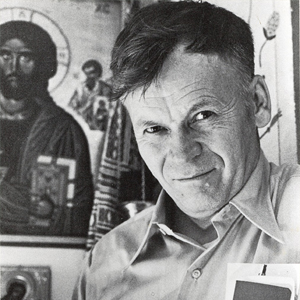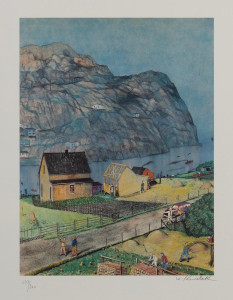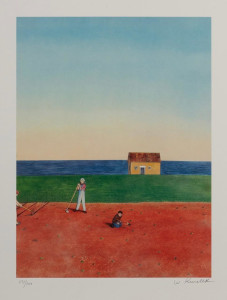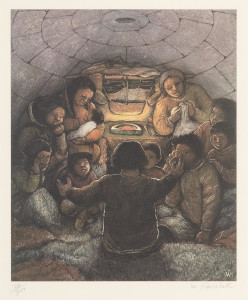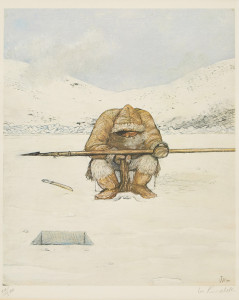Artworks by
Born on a farm near Willingdon, Alberta in 1927, William Kurelek created paintings that explored the reality of farm life during the Depression, with a focus on Ukrainian experiences in Canada. Kurelek’s mother’s family settled in Canada during one of the first waves of Ukrainian immigration in 1899 before the painter’s father arrived in Alberta from Western Ukraine during the second major wave to the province in 1923. In 1934, Kurelek’s family moved to Manitoba, near Winnipeg, due to falling grain prices and a fire that destroyed their home. Upon moving to Manitoba, Kurelek began attending school at the Victoria Public School.
Influenced by the apprehension surrounding the Depression, World War I, and the instability of farming, Kurelek focused on his studies. However, his father did not approve. While Kurelek’s father valued physical labor on the farm, Kurelek concentrated on school and drawing, which caused tension in his household. As a child, Kurelek covered his room in drawings from literature, dreams, and hallucinations. At school, Kurelek’s classmates were enthralled by his stories and drawings.
In 1943, Kurelek and his brother attended Isaac Newton High School in Winnipeg. While in Winnipeg, he frequented Ukrainian cultural classes offered by St. Mary the Protectress. In 1946, Kurelek enrolled in the University of Manitoba studying Latin, English, and history. While in university, Kurelek’s mental health spiraled, which he later self-identified as depersonalization.
After university, in 1948, Kurelek’s family relocated to a farm near Hamilton, Ontario. The next fall, in 1949, Kurelek began studying at the Ontario College of Art working towards a career in commercial advertising. While in school he was uninterested in the competitiveness and emphasis on earning high grades. So, he decided to study with David Alfaro Siqueiros in San Miguel de Allende, Mexico. During his hitchhike to Mexico, Kurelek experienced his first mystical experience while sleeping in the Arizona desert. In this vision, a robed figure asked him to look after his sheep. Upon his arrival to Mexico, Kurelek learned that Siqueiros had departed, and the program was under new direction by Sterling Dickinson. Dickinson’s program was more informal and allowed Kurelek to become aware of social issues and develop his belief system.
